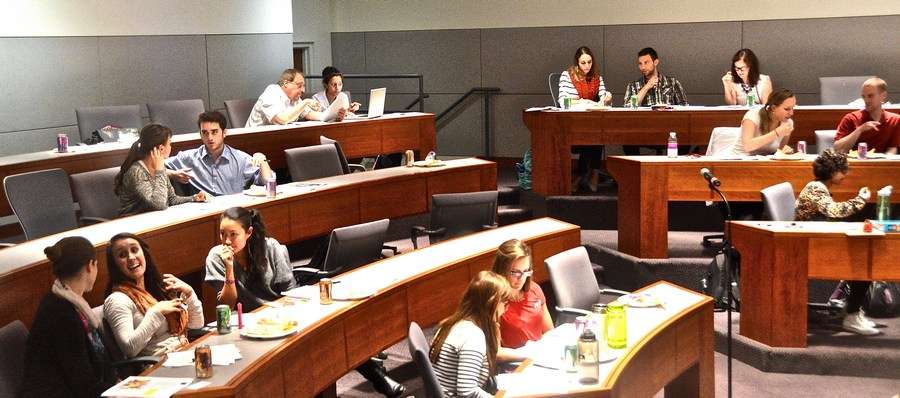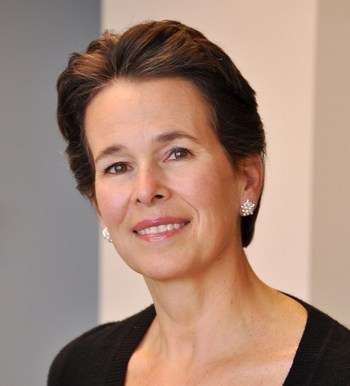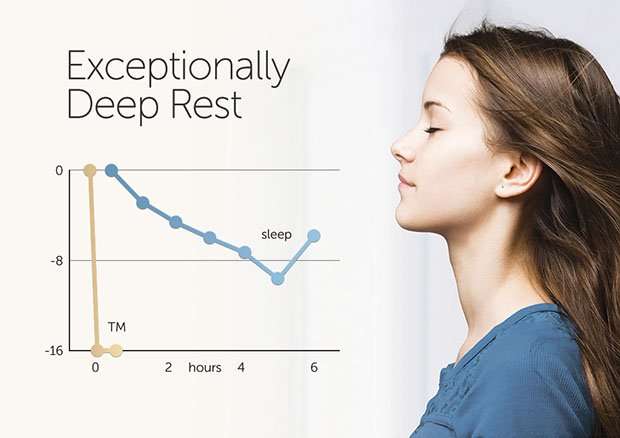We all want knowledgeable, capable, calm, and caring doctors. But doctors work in a profession where lives are on the line and where there is always more to learn. The constant stress results in high burnout rates among physicians—they’re more than twice as likely to divorce, and even to commit suicide.

Educating stress-resilient doctors
To help cope with the inevitable pressure that both medical students and practicing physicians experience, Loyola University’s Stritch School of Medicine is offering students a credit-bearing elective course, Physician Wellness through Transcendental Meditation. Faculty are also participating in a physician wellness study. The elective is the first offered in a major medical school in the US.
Recently two Chicago news shows, Chicago Tonight on public broadcasting station WTTW11, and The Morning Shift on National Public Radio’s WBEZ Chicago, featured stories about the TM intervention and its remarkable effectiveness for Stritch students and faculty. Sharing their experiences were Linda Brubaker, MD, the Dean of the Stritch School of Medicine; Carla Brown, EdD, one of the TM course instructors; and Danielle Terrell, a medical student.
These media reports followed publication of two articles in the Chicago Medical Society’s Chicago Medicine Magazine, both of which outlined the scientific evidence on TM practice from an MD’s perspective. One article was authored by Dr. Brown and Gregory Gruener, MD, Vice Dean of Education at Stritch School of Medicine, and the other by Maura Tresch, MD, a graduate of Stritch and of the elective.

School of Medicine
For Dean Brubaker, offering this class in her medical school is a no-brainer:
“We have an important role in society to help keep people well, and when they become ill, to diagnose and treat their illnesses and to try to prevent these, whenever we can. That’s high-stakes work.
“It takes a lot of education, a lot of technical skill, cognitive skill, and continuous learning for the 25 to 45 years that you are practicing as a physician. That’s a long time to be in a high-stakes situation, and it is important to learn self-care so you don’t burn out—so that you remain resilient and exhibit outstanding professionalism the whole time you practice as a physician.”
With regard to adding the TM technique at Stritch, she commented, “There’s no risk to this, and we really care about our medical students. We want our students to learn self-care so they can be resilient doctors, and Transcendental Meditation is one of the things that can help them get there.”
Learning about and experiencing the benefits of Transcendental Meditation
Thus, medical education and Transcendental Meditation – a technique rigorously proven to provide stress relief – have turned out to be a perfect match.
Danielle Terrell, a second-year medical student at the Stritch School of Medicine, was instructed in the Transcendental Meditation technique by Dr. Carla Brown just as Terrell started her studies at Loyola.
The benefits she experienced were immediate and tangible.
“All of a sudden I did not have road rage; I was not snappy. I had a stress-induced psoriasis that completely went away, because the stress level completely dissolved.”
The benefits have motivated Terrell to keep up her regular meditation practice. Now in her second year, the workload is piling up for Terrell, who puts as many as 60 to 90 hours per week into her academic and clinical responsibilities. Yet with the stress relief she receives from her TM practice, she still enjoys every minute of it.
The elective course offered at Stritch consists of TM instruction and five classes. Students learn Transcendental Meditation whenever the course of instruction fits into their schedule. The classes are then offered over two semesters and also online for students who cannot attend due to clinical and other responsibilities. The classes educate the doctors-in-training about the TM research, with the help of visiting researchers and MDs, including Norman Rosenthal, MD, clinical professor of psychiatry at Georgetown University, whose talk about TM inspired Stritch to offer the classes.
Terrell finds this setup perfect. “As medical students, we’re always looking for the data: how does it work and why does it work? We learn how to meditate, but the subsequent five classes cover all the things we deal with in medicine, such as high blood pressure, anxiety, depression, PTSD, autoimmune diseases, and uncovering all the research. ”
Thus, the students not only relieve their own stress but also gain the knowledge of how this technique can help their patients down the road.

As to her success in medical school, Terrell credits TM for many positive outcomes:
“It’s allowed me to be my best possible self—the best student that I could have possibly been in medical school. It’s like a stress raincoat. You put a raincoat on, go outside in the rain, and the water just rolls off you and you don’t get wet. TM is like this raincoat that makes you impervious to stress.
“Your day does not change; you are still going to have the same stresses. Whatever it is, whether you are a physician in the medical field or not, the stress just rolls off you.
“I am able to think better, take tests better, problem-solve better.”
Terrell points out that juggling the heavy academic workload is not the only concern for medical students.
“A lot of students fear [when] coming into medical school that it is very isolating at times. You are extremely busy, it’s hard to make time, and because you are stressed, you are not the greatest person to be with in a relationship.
“I can definitely say my relationships have improved and flourished because of TM. I am able to make the time, and I am less snappy – I don’t snap at people anymore,” Terrell notes when speaking of the impact of her meditation practice outside the classroom.
Easy to learn and practice
In addition to the lecture series by leading researchers on TM, students practice the technique themselves for 20 minutes twice a day. Several rooms at Stritch are dedicated to meditation and are available to the students to help them meditate regularly. Duncan and Carla Brown have so far taught 150 Stritch students the Transcendental Meditation technique.

In her recent media appearances, Dr. Carla Brown explained the gist of how TM is able to provide such benefits:
“It’s really low effort on the practitioner’s part. TM is essentially a way to allow your own mind to settle within to its own source and to expand awareness, very innocently, without forcing the mind. We don’t have to fight with our thoughts with TM.”
Even though the technique is simple, Dr. Brown stresses the need for proper instruction by a certified teacher. “You need a tool and to know how to use that tool to have this experience. In TM practice that tool is the mantra—it’s a vehicle, like a little boat, that allows your mind to experience less active, more silent, deeper, more expanded levels of your own awareness. You’re taught exactly how to use the mantra and handle thoughts or any of the other things that happen during the practice.”
As to the question about how quickly the technique could be mastered and start yielding positive results, Dr. Brown replied, “You can become an expert at it immediately. People with very acute levels of anxiety have a 50% reduction in their anxiety levels within a couple of weeks.”
Dr. Brown also pointed out that with about 380 published, peer-reviewed studies over 45 years, TM has set a standard for an evidence-based practice, which is why it fits so well into the context of a modern western medical school.
At Stritch, a holistic approach to students themselves as well as to medicine is a core focus. According to Dean Brubaker, instead of raising eyebrows, the elective course in TM has raised many questions, such as where other people can learn the technique.
“The people see the benefits that the students, faculty, and staff are experiencing. This program has made a big difference in our medical school. This is a core element of how we teach our students self-care.”
Brubaker said, “Who wouldn’t want doctors who are taking good care of themselves and have more to give to their patients?”
WATCH VIDEO: Doctors on benefits of TM
















